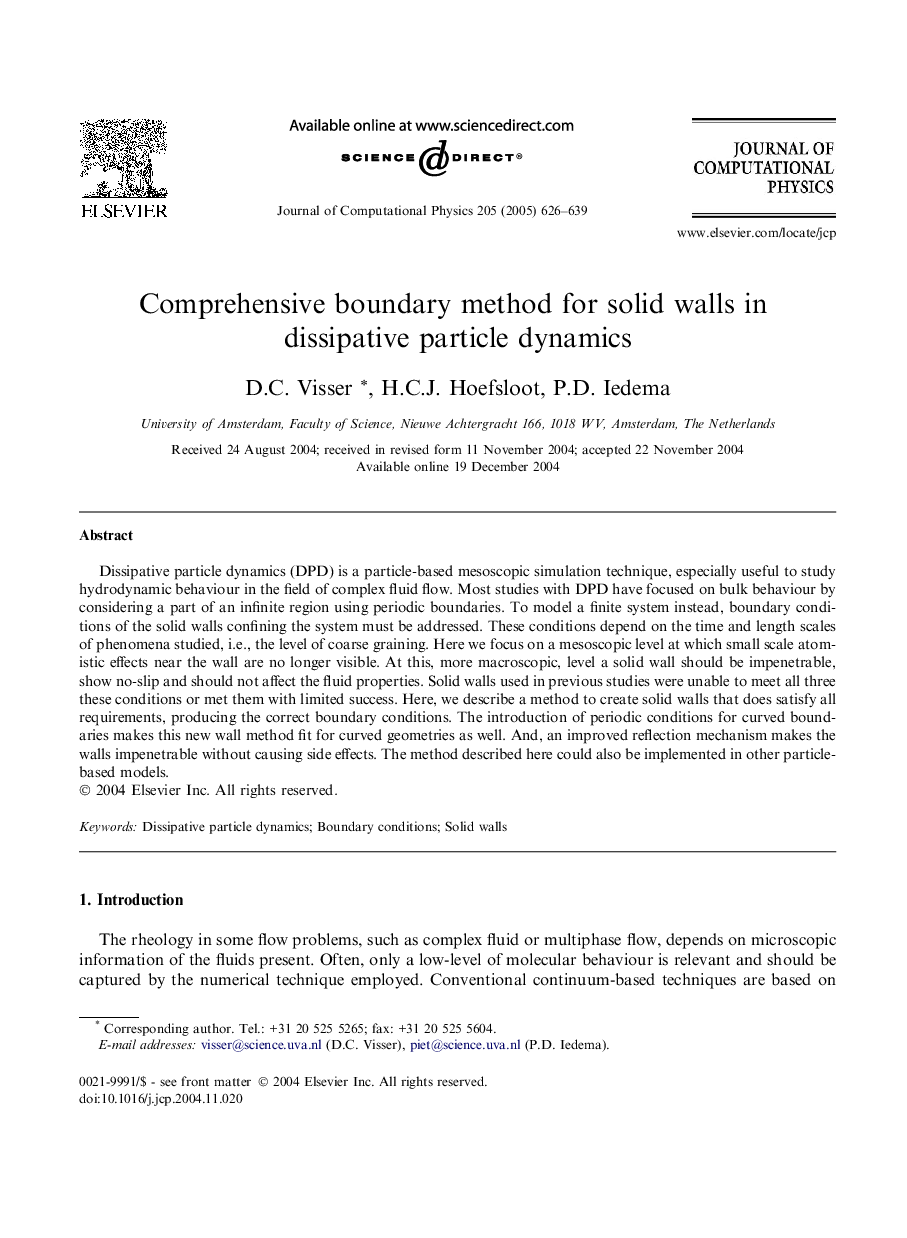| کد مقاله | کد نشریه | سال انتشار | مقاله انگلیسی | نسخه تمام متن |
|---|---|---|---|---|
| 10357165 | 867852 | 2005 | 14 صفحه PDF | دانلود رایگان |
عنوان انگلیسی مقاله ISI
Comprehensive boundary method for solid walls in dissipative particle dynamics
دانلود مقاله + سفارش ترجمه
دانلود مقاله ISI انگلیسی
رایگان برای ایرانیان
کلمات کلیدی
موضوعات مرتبط
مهندسی و علوم پایه
مهندسی کامپیوتر
نرم افزارهای علوم کامپیوتر
پیش نمایش صفحه اول مقاله

چکیده انگلیسی
Dissipative particle dynamics (DPD) is a particle-based mesoscopic simulation technique, especially useful to study hydrodynamic behaviour in the field of complex fluid flow. Most studies with DPD have focused on bulk behaviour by considering a part of an infinite region using periodic boundaries. To model a finite system instead, boundary conditions of the solid walls confining the system must be addressed. These conditions depend on the time and length scales of phenomena studied, i.e., the level of coarse graining. Here we focus on a mesoscopic level at which small scale atomistic effects near the wall are no longer visible. At this, more macroscopic, level a solid wall should be impenetrable, show no-slip and should not affect the fluid properties. Solid walls used in previous studies were unable to meet all three these conditions or met them with limited success. Here, we describe a method to create solid walls that does satisfy all requirements, producing the correct boundary conditions. The introduction of periodic conditions for curved boundaries makes this new wall method fit for curved geometries as well. And, an improved reflection mechanism makes the walls impenetrable without causing side effects. The method described here could also be implemented in other particle-based models.
ناشر
Database: Elsevier - ScienceDirect (ساینس دایرکت)
Journal: Journal of Computational Physics - Volume 205, Issue 2, 20 May 2005, Pages 626-639
Journal: Journal of Computational Physics - Volume 205, Issue 2, 20 May 2005, Pages 626-639
نویسندگان
D.C. Visser, H.C.J. Hoefsloot, P.D. Iedema,